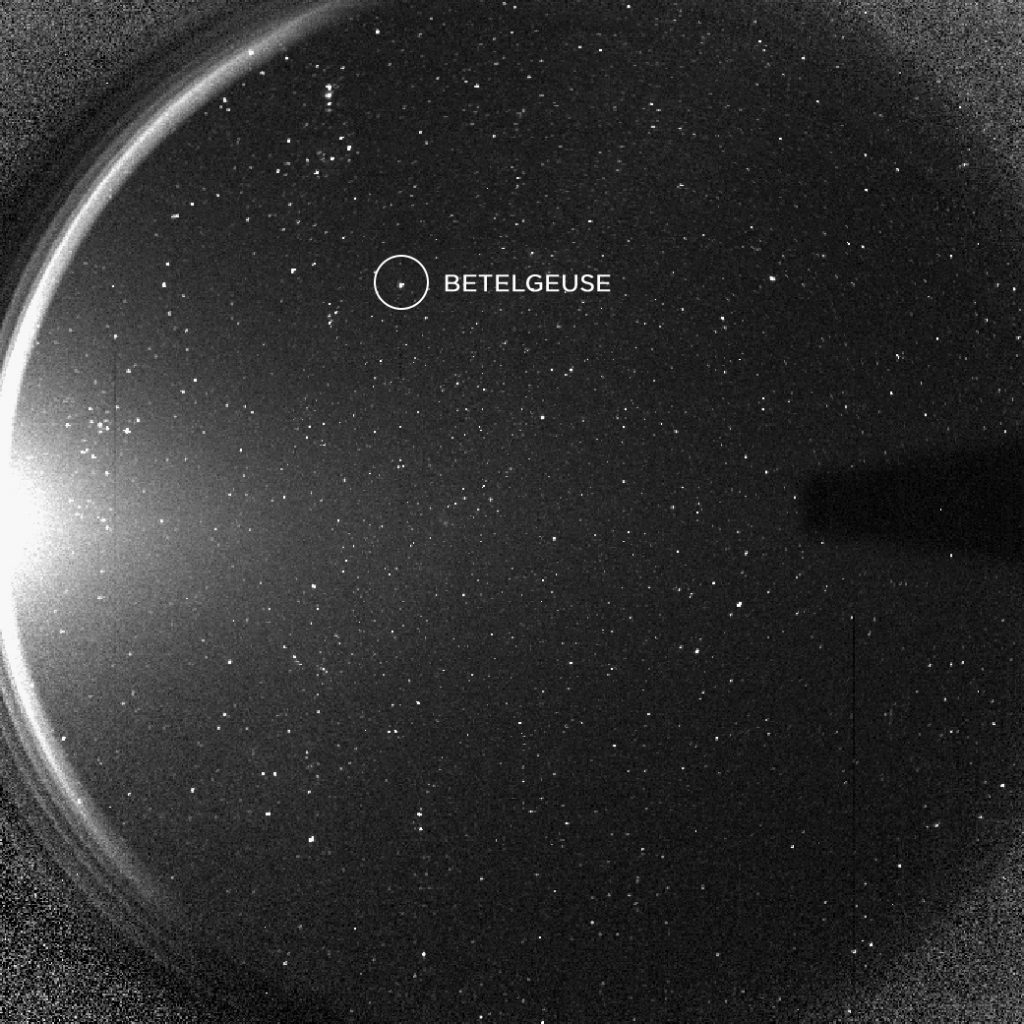
Folks, I’m here to share some good news: Betelgeuse is misbehaving again.
Last winter, this normally very bright red giant star took us all on an emotional roller coaster ride as it plunged in brightness, appearing fainter than it had ever appeared before. While it’s highly unlikely this star will go supernova for at least 100,000 years, many of us nevertheless hoped something exciting might come of this event and followed its behavior closely. While it did not explode, and in fact re-brightened on schedule, it still started our year with one heck of a good mystery.
Betelgeuse is a variable star with a 420-430 day period, and changes in brightness are part of its everyday behavior. That it got dim wasn’t a big deal. It was how dim it got that had everyone scratching their heads and taking data. From Thanksgiving through New Year’s, Orion’s shoulder faded away until one day, following the expected calendar of behavior, it brightened again. It was expected that this brightening would continue for some 200 odd days, with Betelgeuse returning to its peak brightness in July or August.
Betelgeuse had other plans, however.
This summer, a team of scientists took advantage of STEREO-A’s position 70 degrees around the Sun from Earth. In late June and early July, this solar observer was essentially where the Earth was back in April, and from that position had an unobscured view of Betelgeuse. On three different occasions, mission managers pivoted the telescope to observe a field containing Betelgeuse and numerous other standard stars that could be used to accurately determine Betelgeuse’s brightness.
Which was getting fainter instead of brighter?
According to an Astronomer’s Telegram filed by Andrea Dupree, Edward Guinan, and William T Thompson: Surprisingly, instead of continuing to increase or level off in brightness, Betelgeuse has decreased by ~0.5 mag from mid-May to mid-July. Spanning the STEREO observations, the star dimmed at a rate of 5 mmag/day. The decrease in brightness over 26 days between our first and third observation is comparable to the photometric behavior in late October 2018, and slower than the faster decline, between October 22 and November 10 2019, that marked the beginning of the historic Great Fainting event in February 2020. The next ‘minimum’ according to the 420-430 d periodicity is predicted to occur in early April 2021.
As we enter the dog days of summer during August, Betelgeuse and the dog star Sirius have begun to return to our skies. Currently, Betelgeuse is rising at about 2:45 am local time and gets high enough to allow a reasonable measurement prior to the beginning of twilight. While I personally try to be in bed at that hour, there are many good souls at the American Association of Variable Star Observers (AAVSO) who are going out and taking measurements, and a lightcurve generated from the AAVSO database yesterday shows that Betelgeuse continues its unexpected descent in brightness.
Currently, all the data from STEREO and the AAVSO database are showing the brightness of Betelgeuse only in the green part of its spectra – its “V-magnitude” to use the technical term. To really know what’s going on we need more information. Specifically, we want to know if the star is changing color – which would mean it’s changing temperature – and we want to know from spectral lines if it is expanding or contracting. During the great dimming event of winter 2019-2020, this kind of data allowed us to see that Betelgeuse dipped below expected brightness in all colors and that this occurred while it was expanding outward.
More Information
NASA Satellite’s Lone View of Betelgeuse Reveals More Strange Behavior




 Join the Crew!
Join the Crew!
 Escape Velocity Space News
Escape Velocity Space News
0 Comments